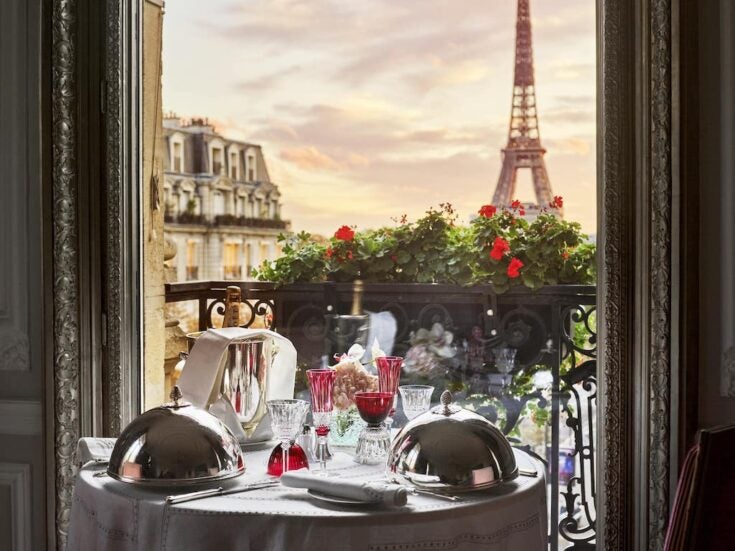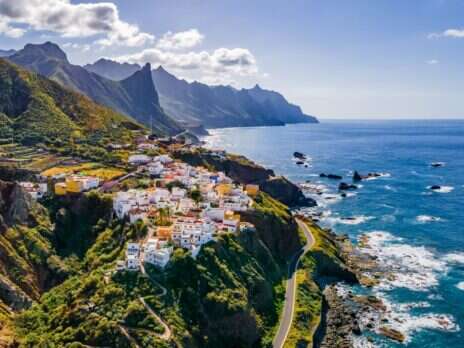
A heartfelt tribute to the Filipino art and soul
Few things carve a deeper knowledge or a better understanding of a place and its people than a sensory experience. Tactile. Evocative. Insightful.
The Peninsula Academy’s thoughtfully curated bespoke tours are designed to give guests exactly that: remarkable experiences that are as memorable as they are enriching.
These immersive tours and activities showcase what we at The Peninsula Manila feel are some of the highlights of the local landscape, inspiring places and experiences anyone looking to know the Philippines shouldn’t miss: historical sites that remain relevant to this day, contemporary arts and design and the forces behind them, traditional crafts, and an ever-evolving culinary scene.
It is with great pleasure that we offer this collection of photographs, taken by Francisco Guerrero, that celebrate unique and distinctively Filipino experiences, tailored by highly qualified industry experts as a heartfelt tribute to the Filipino people and the passions that inspire such a dynamic, complex and vibrant culture.
Francisco Guerrero
Francisco Guerrero is a Spanish-Filipino photographer based in Manila. His wide range of editorial and commercial work includes covers for Travel + Leisure US, stories for Conde Nast Traveler, Monocle, Elle Décor France, Surface, New York Times Travel, Grid and images for the Philippine Department of Tourism’s It’s More Fun in the Philippines campaign. He also hosts a TV show on Philippine travel photography titled What I See, and is currently at work on long-term coverage of the typhoon Haiyan post-disaster scene and recovery efforts for the World Health Organization. His images are most notable for their sensitive and intelligent approach to the subjects — often the people and places that he encounters during travel but, more importantly, to the larger stories behind them.
His photographs have been exhibited in Manila Contemporary, the World Health Organization, and at 1335 Mabini. He attended the Brooks Institute of Photography and holds a BA in Anthropology and Communications from Goldsmiths University, London.
If This Walls Could Speak: Tour of the Old Walled City of Intramuros
The timeworn stone ramparts of Intramuros, a 400-year-old fortress town — and once the center of social, political and cultural life in Spanish-occupied Philippines — have stood witness to countless stories. While some have faded into history, others have endured, echoing through time and remaining strong and powerful in its significance.
Among the narratives that have shaped the fortunes of the entire country is one that took place within the prison walls of Fort Santiago, where National Hero Jose Rizal had been detained before he was eventually executed. More than 300 years of colonial rule, culminating in one man’s death by firing squad and the simmering revolution that it brought to the fore, are central to The Peninsula Academy’s If This Walls Could Speak: Tour of the Old Walled City of Intramuros.
History is never cut and dried, and layers upon layers of the country’s past are unfurled and examined during the engaging two-hour tour with some of the Philippines’ most accomplished historians as guides. Part social commentary and part history lesson, this heritage tour offers as much entertainment as it does revealing insights into the Filipino psyche.
Roam the narrow cobblestone lanes and wide promenades of Intramuros — past restored buildings that once housed peninsulares and insulares both secular and religious, past pockets of manicured greenery fenced by ornate wrought-iron gates en vogue in the 18th century — on foot or riding a calesa, a colorful, horse-drawn coach that was the major mode of transport during the Spanish era. A number of calesa still ply these historic streets.
 The story of Intramuros is as much about what it kept outside its walls as much as what it fenced within. A concentration of the elaborately coiffed and heavily perfumed ruling class went about their daily affairs inside Intramuros, patrolled within and around its perimeter by a security force known as the guardia civil. The ruling upper crust was, for the most part, insulated from the rest of the wider city where, from the middle towards the end of the 19th century, a firestorm of unrest was slowly but steadily gathering momentum. The guardia civil were also local law enforcers of the colonial government, distinguished by their uniforms made from blue-and-white striped cotton rayadillo (seersucker which was perfect for enduring the heat of tropical summers), who were deputized to arrest and detain on mere suspicion of illegal activity.
The story of Intramuros is as much about what it kept outside its walls as much as what it fenced within. A concentration of the elaborately coiffed and heavily perfumed ruling class went about their daily affairs inside Intramuros, patrolled within and around its perimeter by a security force known as the guardia civil. The ruling upper crust was, for the most part, insulated from the rest of the wider city where, from the middle towards the end of the 19th century, a firestorm of unrest was slowly but steadily gathering momentum. The guardia civil were also local law enforcers of the colonial government, distinguished by their uniforms made from blue-and-white striped cotton rayadillo (seersucker which was perfect for enduring the heat of tropical summers), who were deputized to arrest and detain on mere suspicion of illegal activity.
 Long before its present incarnation as a favored wedding venue, the Baluarte de San Diego served a less romantic purpose. One of the oldest stone fortifications in Intramuros, this once housed a foundry and the mint of the Spanish government. Its ruins still reveal the maze-like layout of the heavily guarded baluarte.
Long before its present incarnation as a favored wedding venue, the Baluarte de San Diego served a less romantic purpose. One of the oldest stone fortifications in Intramuros, this once housed a foundry and the mint of the Spanish government. Its ruins still reveal the maze-like layout of the heavily guarded baluarte.
Spirit of Corregidor: A World War II Tour by Land and Helicopter
A pivotal role in world history
As the Second World War raged on in Europe and other parts of the world, the Philippines was engulfed in the Pacific War theater. Many battles that, collectively, changed the tide of the Pacific War were fought just off Philippine shores. But before the largest naval battle was fought in the Surigao Strait and the Leyte Gulf, one that eventually liberated the entire country, Filipino and American forces made a heroic stand against the invading Japanese army in Corregidor Island.
This speck of an island sits strategically on the mouth of Manila Bay, like a sentinel in the sea that quietly guards city. As such, it was heavily fortified during the war and it played an important role as a communications center and army barracks. It fell to heavy bombardment during the closing chapters of the war, and the ghosts of fallen soldiers from both sides of the conflict are said to haunt this scarred island and its ruined fortress.
The Peninsula Academy’s Spirit of Corregidor: A World War II Tour by Land and Helicopter brings to life the drama of the Allied forces’ last stand against the Japanese.
 The journey 70 years back in time begins in the morning, at the helipad of The Peninsula Manila, where guests hop aboard a helicopter for a ride over the city and across Manila Bay, towards the rocky island fortress of Corregidor. A guide then takes them on a private tour aboard a 1940s-style tranvia or tram, through the major sites.
The journey 70 years back in time begins in the morning, at the helipad of The Peninsula Manila, where guests hop aboard a helicopter for a ride over the city and across Manila Bay, towards the rocky island fortress of Corregidor. A guide then takes them on a private tour aboard a 1940s-style tranvia or tram, through the major sites.
An alfresco setup for Champagne and canapés awaits guests at the end of the tour, just before they board the helicopter once again for a ride along the spectacular Cavite-Batangas coastline, and over Taal Lake and restive Taal Volcano’s sulfur fumes. Finally, the helicopter descends on the hilltop town of Tagaytay where guests can settle in for an unhurried garden lunch at nearby Antonio’s, heralded by the Miele Guide as one of Asia’s best restaurants.
 The Pacific War Memorial in Corregidor was erected to commemorate a shared wartime bond between The Philippines and the United States, and is dedicated to the heroic fallen soldiers of the war.
The Pacific War Memorial in Corregidor was erected to commemorate a shared wartime bond between The Philippines and the United States, and is dedicated to the heroic fallen soldiers of the war.
Taal Tale: Tour of the Grand Old Houses of Taal Town
Compelling landscapes, storied terrain
The lakeside town of Taal in Batangas has a long and interesting past — obliterated by at least one documented volcanic eruption in 1754, it bounced back to play an important role in the protracted revolt against Spanish colonial rule. Taal’s wealthy and influential Filipino families who were friendly with Spanish authorities were said to have hidden wounded revolutionary soldiers from the guardia civil in cellars, under beds, and even beneath heaps of clothing, and nursed them back to fighting form. From these highly placed figures of local society came Marcela Agoncillo, who hand-sewed the country’s revolutionary flag according to General Emilio Aguinaldo’s specifications.
Many of the grand homes of these wealthy families, built in the traditional style of the bahay na bato or stone house, have either been preserved or restored to their former glory. Today Taal is a heritage site and is considered as one the best-preserved towns from Spanish times.
Curious about what 18th century local society was like? Travel back in time with The Peninsula Academy’s Taal Tale: Tour of the Grand Old Houses of Taal Town.
For the small population of privileged Filipino families that lived in 18th century Taal, not all was grim under Spanish rule. They lived in large, luxurious homes filled with European trimmings, traveled freely to other countries, and studied abroad. They dined on several courses of local specialties using expensive china, silverware and crystal glasses. They had servants, calesa and coachmen, and dining halls big enough for balls.
And while their hearts beat for the inangbayan or mother country, and their minds plotted with the revolutionaries as they secretly financed the rebellion, they kept up the pretence of allegiance to Spain over dinner and drinks whenever the gobernador came by for a social call.
One can imagine such a dinner conversation, or one can relive those highly charged moments in history with a visit to Villa Tortuga, a restored 19th-century bahaynabato. Dine on dishes prepared the way they were back then, donning rentals of traditional dresses and suits, in a setting that speaks volumes about life a hundred or so years ago.
Lunch is followed by a walking tour of the centuries-old Basilica of St. Martin de Tours, then merienda(the Philippine version of afternoon tea) at Casa Villavicencio.
The Basilica of St Martin de Tours, dedicated to the patron saint of Taal, is considered the largest church structure in the Philippines and all of Asia. Construction on the original site and structure began almost as soon as Augustinian missionaries founded the lakeshore town in 1572. A volcanic eruption that destroyed the original church, and the rest of the town, forced the transfer to its present site.
LutongPinoy: Sweet Cooking the Filipino Way for Kids
 As Filipino cuisine continues to pique the interest of curious palates around the world, many of whom make note of the touch of inventiveness in Filipino dishes, The Peninsula Academy offers its young guests an opportunity to play master chef. The challenge? To learn how to make a local icon of a dessert, the halo-halo, a mix of sweet local treats.
As Filipino cuisine continues to pique the interest of curious palates around the world, many of whom make note of the touch of inventiveness in Filipino dishes, The Peninsula Academy offers its young guests an opportunity to play master chef. The challenge? To learn how to make a local icon of a dessert, the halo-halo, a mix of sweet local treats.
Among its ingredients, piled high over a mount of shaved ice and condensed milk, are fresh fruit, beans, pulses, sweet preserves, and egg custard. Here’s where the inventiveness kicks in — fruits and flan? It’s all in the mix. Watch and taste it as it all makes sense in LutongPinoy: Sweet Cooking the Filipino Way for Kids. Adults with a youthful sense of fun are welcome to join.
 Pasalubong: A Filipino Crafts Class for Young People
Pasalubong: A Filipino Crafts Class for Young People
From the lakeside town of Paete, known for its artisans who work with paper and wood, comes the taka, a crafts tradition that involves making figures out of papier-mache and painting them with bright colors.
Many taka come in the form of horses, kalabaw or water buffalo, and other animals, but also in the key figures of any given season — around Christmastime, you’ll see many taka in the form of Santa Claus or Rudolph the Reindeer hanging outside souvenir and crafts stores in Paete. It is a quintessential Filipino souvenir, as much as a piñata is Mexico’s, and guests get the chance to make one of their own through The Peninsula Academy’s Pasalubong: A Filipino Crafts Class for Young People.
 Defining Luxury: Jewelry by Wynn WynnOng
Defining Luxury: Jewelry by Wynn WynnOng
Defining Luxury: Jewelry by Wynn WynnOng takes guests to the private studio of Wynn WynnOng, one of the Philippines’ most eminent bespoke jewelers whose pieces have been extensively featured in The Robb Report, Town & Country, Asian Fortune, Platinum and on the cover of Women’s Wear Daily and NY.
Over coffee, tea, Champagne and canapés, she will explain the process of creating her works of wearable art that are celebrated for their beauty, craftsmanship and attention to detail. Guests may also commission jewelry that are guaranteed to be unique — as a rule, Wynn Wynn’s makes only one piece of a kind, and no more than a limited number of pieces each year.
Her brooches, bracelets, rings, necklaces and minaudières are highly sought after by a select list of clientele who appreciate the extraordinary vision and unflagging commitment to quality that is her hallmark.
 Manila Design: Experience Philippine Art, Design and Fashion
Manila Design: Experience Philippine Art, Design and Fashion
Die-hard stylistas will love Manila Design: Experience Philippine Art, Design and Fashion that will allow them to wander at leisure through a pretty and peaceful gated 1950s residential compound that houses the galleries and atelier of three Manila style setters — Albert Avellana (art), Eric Paras (interior design) and Jesus “Jojie” Lloren (fashion) – and where they can discuss over lunch current trends and even buy or commission artworks, limited-edition furniture and couture designs.
 Art in the Hills: 27 Years of Philippine Contemporary Art
Art in the Hills: 27 Years of Philippine Contemporary Art
The hills of Antipolo, to the east of Manila, have always been an inspiring place for artists. Here, art thrives in all manner of expression, from religious woodcraft, functional ironwork, sculpted gardens and fine art.
It is where, for many years, art patron and connoisseur Dr Joven Cuanang has grown his collection that spans opposite ends of the spectrum, from fading antiques by anonymous artisans to contemporary art by artists recognized for the critical and commercial success of their works in art capitals around the world.
Some of the finest examples of contemporary work by the country’s most exciting artists are showcased in the extensive permanent collection of Dr Cuanang’s Pinto Art Museum in Antipolo.
The Peninsula Academy will arrange for curious minds or art enthusiasts to go on a private guided tour of Pinto Gallery, the Silangan Gardens and Pinto Art Museum with the Art in the Hills: 27 Years of Philippine Contemporary Art program.
The tour starts at Pinto Gallery with refreshments served at Silangan Gardens. From there, a guide will take guests to the capilla (chapel) with its antique santos (saints) and then on a short walk down the hillside compound to the museum. The “Art in the Hills” tour comes to a close with a chilled glass of Deutz Peninsula Champagne in hand, as well as a greater appreciation for contemporary Philippine art.








